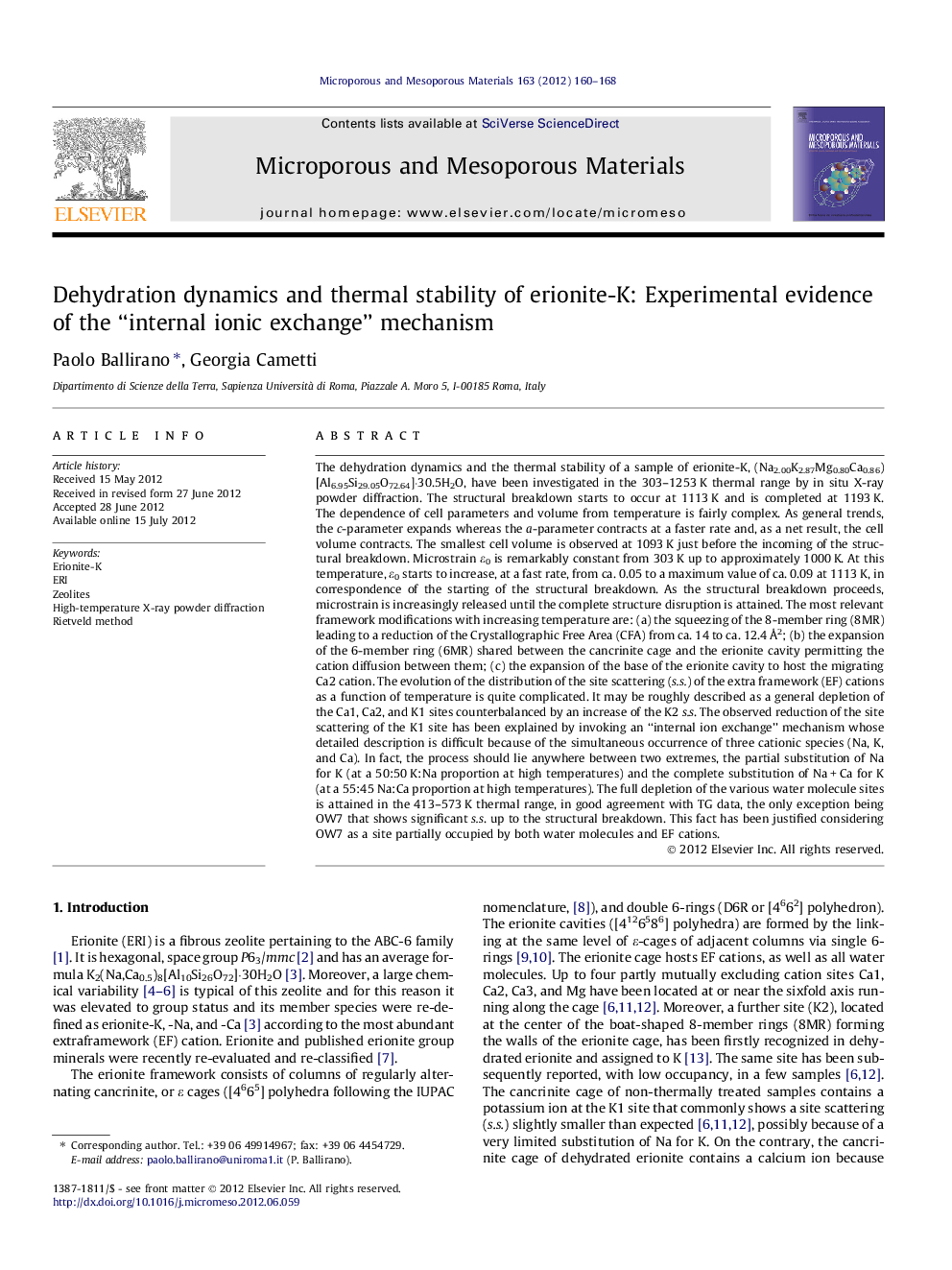| کد مقاله | کد نشریه | سال انتشار | مقاله انگلیسی | نسخه تمام متن |
|---|---|---|---|---|
| 73986 | 49077 | 2012 | 9 صفحه PDF | دانلود رایگان |

The dehydration dynamics and the thermal stability of a sample of erionite-K, (Na2.00K2.87Mg0.80Ca0.86) [Al6.95Si29.05O72.64]·30.5H2O, have been investigated in the 303–1253 K thermal range by in situ X-ray powder diffraction. The structural breakdown starts to occur at 1113 K and is completed at 1193 K. The dependence of cell parameters and volume from temperature is fairly complex. As general trends, the c-parameter expands whereas the a-parameter contracts at a faster rate and, as a net result, the cell volume contracts. The smallest cell volume is observed at 1093 K just before the incoming of the structural breakdown. Microstrain ε0 is remarkably constant from 303 K up to approximately 1000 K. At this temperature, ε0 starts to increase, at a fast rate, from ca. 0.05 to a maximum value of ca. 0.09 at 1113 K, in correspondence of the starting of the structural breakdown. As the structural breakdown proceeds, microstrain is increasingly released until the complete structure disruption is attained. The most relevant framework modifications with increasing temperature are: (a) the squeezing of the 8-member ring (8MR) leading to a reduction of the Crystallographic Free Area (CFA) from ca. 14 to ca. 12.4 Å2; (b) the expansion of the 6-member ring (6MR) shared between the cancrinite cage and the erionite cavity permitting the cation diffusion between them; (c) the expansion of the base of the erionite cavity to host the migrating Ca2 cation. The evolution of the distribution of the site scattering (s.s.) of the extra framework (EF) cations as a function of temperature is quite complicated. It may be roughly described as a general depletion of the Ca1, Ca2, and K1 sites counterbalanced by an increase of the K2 s.s. The observed reduction of the site scattering of the K1 site has been explained by invoking an “internal ion exchange” mechanism whose detailed description is difficult because of the simultaneous occurrence of three cationic species (Na, K, and Ca). In fact, the process should lie anywhere between two extremes, the partial substitution of Na for K (at a 50:50 K:Na proportion at high temperatures) and the complete substitution of Na + Ca for K (at a 55:45 Na:Ca proportion at high temperatures). The full depletion of the various water molecule sites is attained in the 413–573 K thermal range, in good agreement with TG data, the only exception being OW7 that shows significant s.s. up to the structural breakdown. This fact has been justified considering OW7 as a site partially occupied by both water molecules and EF cations.
.Figure optionsDownload as PowerPoint slideHighlights
► The dehydration dynamics and thermal stability of erionite was studied by XRPD.
► The structural breakdown occurs in the 1113–1193 K thermal range.
► The Ca2 cation migrates toward the center of the base of the erionite cavity.
► The reduction of the s.s of K1 site is due to the internal ion exchange mechanism.
► The full depletion of water molecule sites occurs in the 413–573 K thermal range.
Journal: Microporous and Mesoporous Materials - Volume 163, 15 November 2012, Pages 160–168